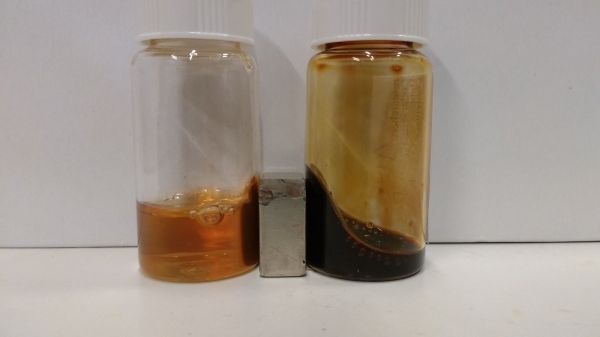Using a magnetic fluid, a waste flow can be separated into multiple segments in a single step. Researchers from Utrecht and Nijmegen have now succeeded in creating a magnetic fluid that remains stable in extremely strong magnetic fields, which makes it possible to separate materials with a high density, such as electronic components. The results have recently been published in The Journal of Physical Chemistry Letters.
When you drop a stone and a wooden ball into a basin of water, the stone will sink while the ball floats on the surface. This is because the two objects have different densities: the stone is more dense than the water, while the wood is less dense. That principle is also used in magnetic density separation (MDS), except that instead of using water — which has a fixed density — it uses a magnetic fluid with an effective density that can change in relation to its distance from a magnet: it has a higher apparent density at less distance to the magnet. As a result, waste particles of different densities float at different depths in the fluid.
Continue reading at Utrecht University
Image via Utrecht University


